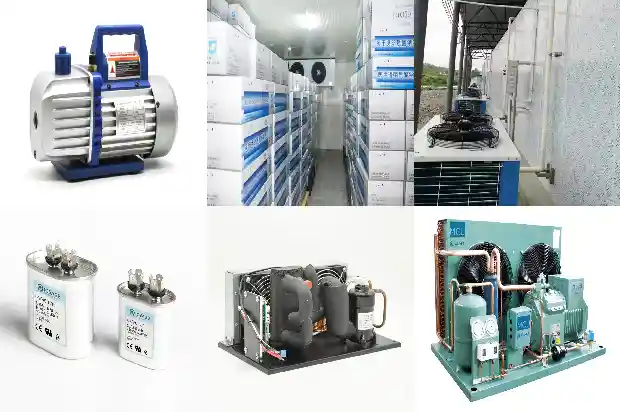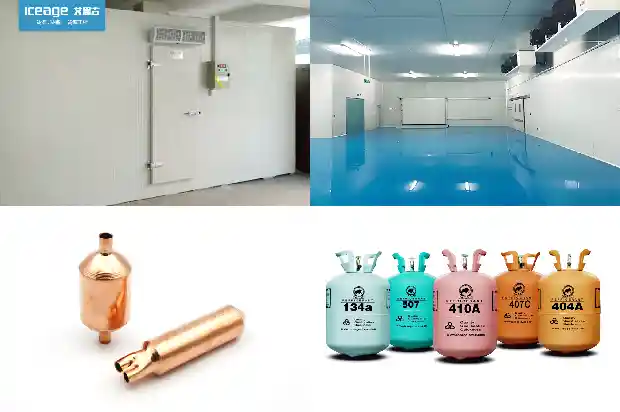What are the characteristics of low-temperature cold storage?
2024-11-19
The low-temperature cold storage body is mainly composed of various heat insulation panels, namely heat insulation wall panels (walls), roof panels (ceiling panels), bottom plates, doors, support plates and bases, etc. They are spliced and fixed through the special structure of male and female hooks to ensure good heat insulation and airtightness of the quick-freezing cold storage.

The refrigeration unit of the low-temperature cold storage includes compressors, air coolers and terminal equipment.
Characteristics of the low-temperature cold storage:
- Advanced technology of the low-temperature cold storage:
The low-temperature cold storage adopts a frost-free quick-freezing refrigeration method, is equipped with well-known compressors and refrigeration accessories, and uses automatic defrosting. The control mode is intelligent control by a microcomputer. - Novel materials of the low-temperature cold storage:
The body of the low-temperature cold storage uses rigid polyurethane or polystyrene foam heat insulation sandwich panels, which are formed by one-time pouring with the high-pressure foaming process and can be made into various lengths and specifications to meet the different requirements of a wide range of users.
Its characteristics are as follows: good heat insulation and preservation performance, light weight, high strength, corrosion resistance, anti-aging and beautiful appearance. The types of panels for the quick-freezing cold storage include color plastic steel, salted steel, stainless steel, embossed aluminum, etc.
- Convenient installation and disassembly of the low-temperature cold storage:
All the wall panels of the body of the low-temperature cold storage are produced with unified molds and are connected through internal concave and convex grooves, so it is convenient for installation, disassembly and transportation, and the installation period is short. Small and medium-sized cold storages can be delivered for use within 2 - 5 days.
The body of the cold storage can be randomly combined, partitioned, enlarged or reduced according to the needs of users.
- Wide application of the low-temperature cold storage:
The temperature of the low-temperature cold storage can achieve dual temperatures or multiple temperatures in one storage, meeting the needs of different users.
The products are widely used in various industries and enterprises such as food, medical and health, bioengineering, hotel services, chemical engineering, electronics, pharmaceuticals, laboratories, etc.
; and provide high-quality products and services for meat, vegetables, fruits, seafood, biological products, medical and health, etc.
Related Articles
- Characteristics and Differences among Water System, Air System and Refrigerant System
- What are the characteristics and application fields of cross-flow fans?
- Characteristics of Mini Cold Storages in Cold Storage Projects
- What are the characteristics of the structure of small cold storage?
- Characteristics and principles of air-cooled and water-cooled units
- Freezing Chamber System Blockage, Dirty Blockage, and Oil Blockage Characteristics and Treatment Methods
- Explosion-Proof Refrigerators' Special Characteristics
- The characteristics and uses of 26 types of air conditioning refrigerants
- What Misconceptions Should Be Avoided in Low - temperature Refrigeration System Repairs
- Why Does the Evaporation Temperature of the Refrigeration System Drop Too Low? And Why is the Condensing Pressure Too High?
- Introduction to the Advantages of Dual - temperature Cold Storage
- Requirements of Cold Storage Insulation for Maintaining Stable Temperature Inside
- Temperature Gradient Differences between Deep Foundation and Surface of Civil Cold Storage
- Temperature Requirements for Various Cold Storages
- Is the heating effect of air source heat pump air conditioner with enhanced vapor injection really good under low temperature conditions?
- 15 Reasons for Excessive Temperature Rise of Motors
- Types and Temperature Requirements of Seed Cold Storages
- Influence of Condensing Temperature Variation on Vapor Compression Refrigeration System
